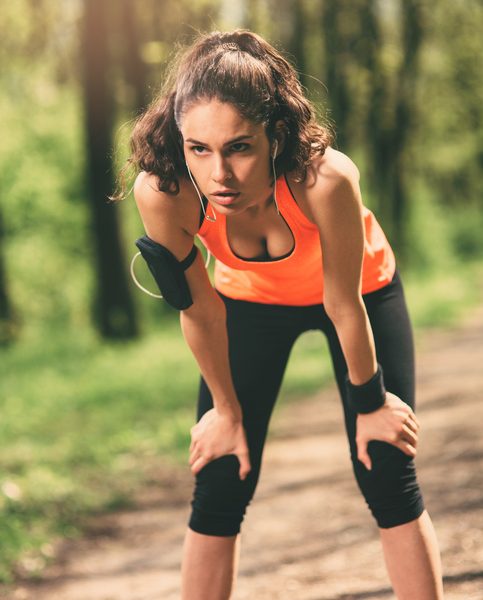Finding yourself in rehab is never going to be an ideal place to be – whatever the circumstances! But the good news is that there is something you can do to avoid it – and before you start belting out Amy Winehouse’s anthem, we’re talking about fitness-induced injury prehab. Although stretching is a tried and tested way of preventing injury, experts believe that embarking on a more specialised programme could put an end to muscle niggles and propel your training into a new league. With recent research showing
that 80 percent of adults in the UK suffer from effects of sedentary living, the team at Ten Health and Fitness have launched their #MoveBetter campaign to emphasise the need not just to exercise more and with greater intensity, but to move better. As a result, Ten’s approach to fitness classes focuses on alignment, form and strengthening the right muscles to prevent injury rather than calorie burn alone. We asked Justin Rogers, creative director at Ten about the campaign and why we should all check in to prehab.
What is prehab?
It may be largely associated with professional athletes, but you don’t have to break any records to safeguard your fitness. “Think of it as preventative maintenance,” Justin says. “It’s designed to keep us stronger, fitter, healthier and functionally active for longer. The precise form prehab takes will depend on a number of factors, including the individual’s needs, goals, age, lifestyle, and history. But in a nutshell, things to consider should be:
– Your lifestyle and current exercise regime to identify potential causes or injury
– Including regular monitoring and assessment along with physiotherapy or sports massage sessions to resolve any current injuries and underlying issues
– Pre-empting any lifestyle-related or historic imbalances to minimise future injuries
– Dealing with any aches or pains early before they become more serious
Typical prehab can include stretching to increase flexibility and range of motion, strengthening to increase muscular control and protect joints, and massage or physio to correct postural imbalances and release tight muscles and prevent minor niggles becoming more serious.”
Do I need it?
The easiest way to be sure is to ask yourself the following questions – am I a little too fond of my Kurt Geiger stilettos? Am I toting a handbag that weighs the same as a small child? Could I honestly say that I’m not a little bit addicted to my smartphone? If the answer is yes to any of the above then it’s likely that those guilty pleasures have wreaked havoc with your posture, putting you at a higher risk for injury. “Quite simply, the way we live now is bad for us. We sit too much and for too long which causes a host of further musculoskeletal and postural issues and imbalances,” Justin tells us. “And when we are active, it’s usually the wrong activity – finishing off a long deskbound day by heading to the gym for an hour’s weightlifting (too often without a proper warm-up).”
Guilty as charged. What can I do?
Before you overhaul your wardrobe and vow to do an immediate digital detox, Justin says that a few workout tweaks could do the trick. “We all share the same potential movement patterns, so whatever we’re doing, we need to ensure that we have good core function, range of motion, joint stability, functional strength and the ability to move freely. Pilates is ideal for resetting your posture, strengthening and aligning the core, improving muscular support around the hips and shoulders – not to mention being a pretty good whole body workout on its own,” he says.
Injury-proof your workout
Ten’s health and fitness trainer Rob Scholten has put together a prehab guide depending on what your favourite exercise is.
-
HIIT-ers
With so much emphasis on speed and effort, injuries often happen when fatigue sets in and form goes out of the window. Incorporate exercises that strengthen the joints’ supporting muscles and stabilise the core to maintain correct movement patterns.
TRY
– Planks or other exercises to strengthen your core.
– Thoraic postural exercises such as a reverse flys (lying on an incline bench with your chest against the bench and a dumbbell in each hand, slowly move your arms up and out, so they are shoulder height) and reverse lunges with a hip extension and rotation.
-
Yogis
With a strong focus on flexibility, many yogis are able to work at extreme ranges of motion through the joints, putting them at risk of hypermobility injuries. Focus on stabilisation exercises to strengthen the supporting muscles – especially around the hips and shoulders.
TRY
– Planks to strengthen the core.
– Goblet squats with a kettlebell (holding a kettlebell close to your chest, squat down lower than a usual squat so your hamstrings are on your calves) or lunges with overhead press (as you lunge, lift overhead with a dumbbell in each hand, while rotating your body).
-
Cyclists
Cycling generally encourages tight hip flexors and calf muscles and upper back and neck pain, therefore a strong core for improving stability, balance and power output is key. Look for exercises that focus on strengthening this part of your body.
TRY
– Exercises to improve thoracic postural stability. For example, standing straight, take your hands out to the side, keeping your elbows by your side. Imagine keeping a small sponge between your elbows and your sides. Breathe in and return to the start position. Repeat eight to 10 times.
– Static plank holds for your core.
-
Runners
There’s no doubt that running is a high impact exercise – each footstrike lands with up to seven times your bodyweight. For this reason, plyometric exercises are a great way of building the strength needed to control the deceleration safely.
TRY
– Box jumps.
– Stretches to loosen tight calves and hip flexors – such as calf raises (where you stand on a step with your heels over the edge and raise and lower them slowly).
– Single leg glute bridges (where you lay on the floor with your knees bent and feet flat and then slowly raise and lower one leg) to target your glutes.
-
Weight lifters
Anyone who does a lot of weight training will already have good core stability and muscular strength. Try to address some of the effects of spending several hours at a desk through a variety of focused stretches before starting your weighted workout.
TRY
– Stretches to loosen tight hips hamstrings and calves (such as calf raises).
– Static plank or core exercises to switch on the abdominals.
– Single leg glute bridges to wake up the hips, glutes and hamstrings, ideally on a ball or foam roller to get the muscles working harder to maintain hip stability.






















